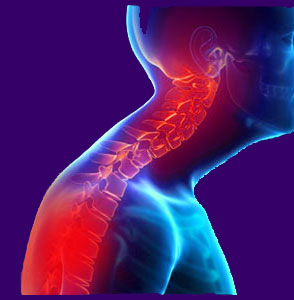
Cervicogenic headache problems can persist for months or even years, causing patients to suffer chronic symptoms in the upper neck, occipital region of the head, the ears, the jaw, the teeth, the eyes and the face. Cervicogenic is a term that points to an origin within the anatomy of the neck, also called the cervical spine. Basically, this means that the pain comes from spinal or muscular issues in the neck, even though the pain can affect almost the entire head.
Cervicogenic head symptoms can be very severe and often defy accurate diagnosis. Even once diagnosed, there is often little that can be done to help patients, with the exception of the golden rule of medicine: provide ongoing and extremely toxic (but profitable!) pharmacological therapy. We have warned patients of this fate for many years and will take this opportunity to provide alternatives that work just as well to manage pain, as well as sharing practices that can actually cure pain, instead of just helping the patient to cope with it.
This discussion focuses on explaining the causes, symptoms and treatment for chronic and recurrent cervicogenic headache issues.
Cervicogenic Headache Causes
Cervical spinal headaches can originate from a variety of possible sources including spinal, muscular and nonstructural reasons:
Spinal pathologies, such as herniated discs, arthritis, atypical curvature and spondylolisthesis can all reduce the patency of the central and/or foraminal canals. This can cause spinal and neuroforaminal stenosis and subsequent spinal cord or spinal nerve compression. Spinal cord compression can negatively influence upward tracts in the cord that might create the ideal circumstances for headache to occur. Meanwhile, pinched nerves will influence the functionality of muscular tissues that might subsequently compress nerve tissues in the upper neck and head, potentially causing headache problems.
Muscular strain, RSI, imbalance and other soft tissue pathologies can also create nerve compression of various tissues that may create cervical headache and related symptomology. Similarly, soft tissues in the neck and head might compress blood vessels, creating structural ischemia leading to severe headache issues.
Mindbody ischemia can target the nerves of the upper neck, head and scalp as a regional process, creating oxygen deprivation and related chronic symptomology, typically as a primary gain distractive mechanism against repressed psychoemotional issues.
Cervicogenic Headache Expressions
Symptoms of cervicogenic headache go far beyond simple head pain, although occipital symptoms around the rear and side of the head are almost universally experienced. Additional expressions can include:
Neck pain may or may not exist. Regardless, other symptoms might worsen upon specific or general movements of the neck, such as head rotation, flexion, extension or even when remaining in a static position while self-supported by the neck muscles instead of supported by a pillow, such as when reclining.
Dizziness, nausea and vomiting are possible. A feeling of vertigo or being “out of phase” with life are also relatively common.
Sound and light sensitivity are typical symptoms. Patients might experience pain or surges in the eyes or ears when being exposed to excessive sensory stimulus.
Pain often wraps around the head, including affecting the inner ear, face, jaw, teeth and behind the eye unilaterally in most cases, but bilateral expression is also possible.
Some patients have difficulty swallowing or blinking the eyes, problems with eye moisture or vision, and tinnitus.
Odd facial pain that moves about is frequently reported. Globus sensation is a rare consequence of cervical headache.
Cervicogenic Headache Treatments
Finding relief from cervicogenic head pain syndromes is dependent on correctly ascertaining the actual source of symptoms, aka achieving an accurate diagnosis. Diagnostic evaluation of headache syndromes is rarely adequately performed, with most patients simply being put on regimens of poisonous drug therapies without the benefit of knowing why they have pain. Therefore, it is no surprise that treatment outcomes are generally unsatisfying and negatively reported by most suffering patients.
Muscular issues, such as RSI, injury or imbalances can usually be resolved using conservative measures, such as physical therapy, stretching and exercise, combined with symptom-reducing and relaxation-inducing modalities like acupuncture, massage and hydrotherapy.
Pathological sources of cervical headache in the spine might have to be addressed through conservative or even invasive case, such as serious spinal or foraminal stenosis, and well as problematic changes in spinal curvature like cervical hyperlordosis or cervical, cervicothoracic and cervicothoracolumbar scoliosis.
Mindbody syndromes using ischemia as the mechanism of symptomatic action should be treated using knowledge therapy. Ischemia is probably the most common causes of all chronic pain, including all manner of headache conditions.
We provide the premier pain relief program available, including a comprehensive approach to care using mind and body techniques that work to prevent, manage and cure chronic pain, including cervical headache syndromes. You can get help 24 hours a day, from anywhere in the world right now.





